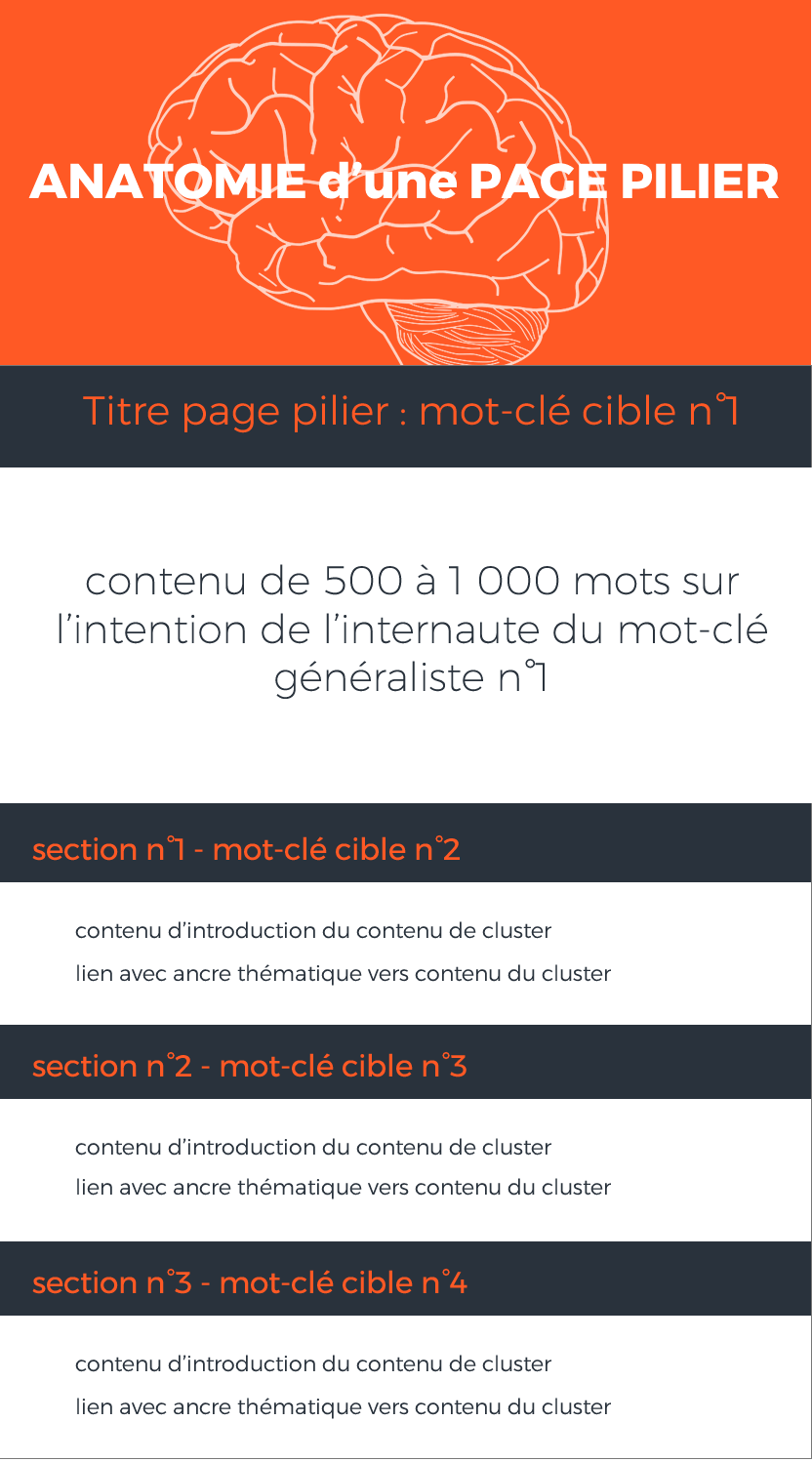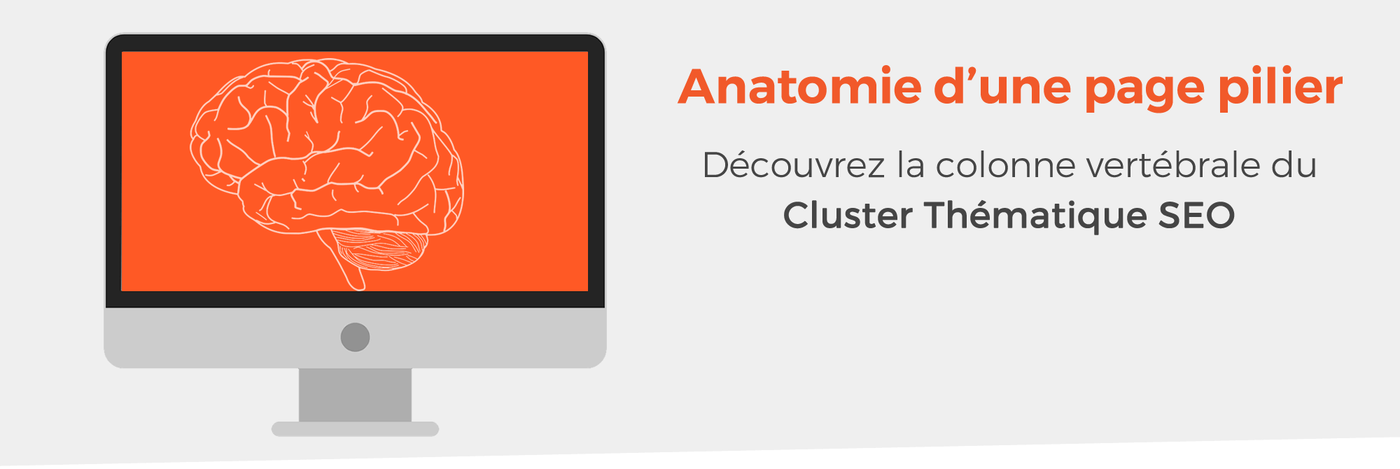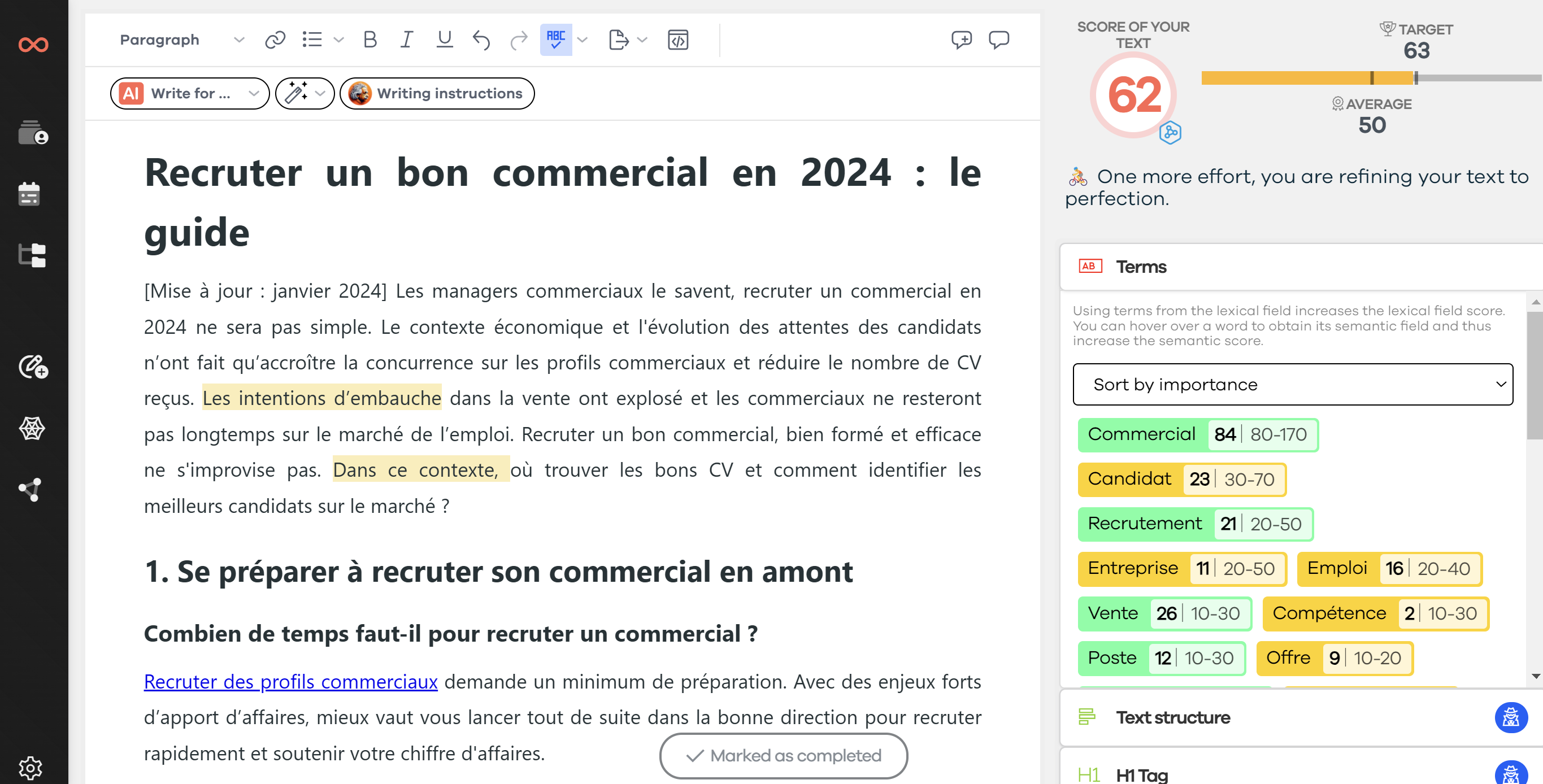The content pillar is the masterpiece of the keyword clustering and the foundation on which the cluster content and links are built. This SEO strategy no longer focuses on the keyword, but on the topic. In this post, I detail the SEO content pillar, its key elements, and my tips for creating excellent pillar content. Want to make your content marketing profitable? Read on!
❓ What is a content pillar in SEO?

A content pillar, also known as a pillar topic or pillar content, is long content (over 1,000 words). This page covers a given theme as broadly as possible, addressing the most important topics that revolve around it. Its goal is to allow readers a general understanding of the complete theme, without going into detail.
Think of it as the spine of your site, your content pillar is the base around which the entire SEO keyword cluster is built. It will then be supplemented by content (for example, blog posts) that will precisely address all the details.
The content occupies a single page on your website, but will be filled with hyperlinks to these cluster contents that explain the topics and specific keywords in more depth. The SEO content pillar should visually resemble a pillar on the screen, that is, narrow and long.
By working on the semantics of your entire website in this way, you send a clear and precise message to SEO algorithms: you are an expert in the field! As a result, when a query is close to your area of expertise, your content pillar has a good chance of appearing on the search engine results pages (SERP).
Your pillar should be a complete resource to encourage visitors to bookmark it and return to it as needed. Ideally, the content pillar is the first content your visitors encounter when searching on Google, allowing it to serve as a "gateway" when they explore the topics detailed in each cluster content.
💥 The elements that make up the content pillar
Just like the SEO keyword cluster, the content pillar is divided into three main components.
1. The main topic
Each pillar page you create should be based on a single theme from the cluster. This is the main topic you are trying to rank for on Google. Work on general keywords of 2 to 4 words with a high search volume.
Why? Because it gives you a lot of topics to explore, while building your positioning in search engines for long-tail keywords that generate qualified traffic!
2. The sections
The body of the content pillar is segmented and organized into logical sections so that the visitor can easily scroll from top to bottom to find answers quickly. Consider the approach of the SEO engagement cycle to decrease your bounce rate and increase your conversion.
If you are creating a topic cluster using your company blog, find out here how to structure an SEO article that performs!
3. The links
The cluster contents that deal with sub-themes or long-tail keywords in more detail are linked with a hyperlink in the corresponding sections (internal linking). The pages to which you make internal or external links can make all the difference in terms of the validity of your content in the eyes of search engines.
In summary, here is the anatomy of an SEO content pillar:

🚀 How to create a good SEO content pillar?
I use the following mnemonic to properly construct my content pillars: T A R G E T for
- Text
- Aim
- Rightly written
- Given time
- Entire
- Tiered
Unique content
Your content pillar can be competed if it does not offer unique content. In addition to presenting relevant information, the best content pillars achieve the highest efficiency by offering new information or presenting existing information in a new way. By differentiating yourself from others, you will strengthen your reputation as an expert in your field.
To find out if your text is unique, go to this other blog post: "Free plagiarism software: which one is the most reliable?".
Aim
Above all, your content pillar must be relevant to the visitor you are trying to attract. To do this, you must answer the questions they are asking while respecting their Search Intent. If the content of your pillar is not related to what they are looking for, internet users will not consider you as a well-informed resource. The direct consequence is little conversion and a probable downgrade in the search engine.
Rightly written
Even the best and most relevant content will not be read if it is presented in an unreadable way. Your content pillars are designed to be shared and used as an expert resource. They must therefore undergo a long editorial process before they even see the public. Don't sabotage your credibility with syntax errors, spelling mistakes, and poor grammar!
If you have doubts about your web writing skills, take a look at this article: "How to succeed in writing good quality web content?".
Given time
A content pillar should be as useful to visitors in 5 years as it is today, even if that means the content is completely different. Nothing is more off-putting for visitors (and search engines) than old outdated information and not found pages. Update your pillar as often as necessary to keep your content always up to date.
Want to update your content less often? Find out how to write a text that doesn't expire: "Everything you need to know about evergreen content"!
Entire
Your pillar must cover its topic in detail, so that even someone who is not familiar with your sector can leave with a general understanding of the topic. Remember that your content pillar is a unique and expert resource for your readers. The most important long-tail keywords and secondary topics will be explored more deeply with the help of cluster content. All the main elements of the topic must then be addressed in the content pillar.
Tiered
With so much content on one page, your readers will undoubtedly feel overwhelmed if they see a huge block of text with little differentiation between sections. Make sure to mark where one section ends and the next one begins. Dividing the content of the content pillar into segments both improves the aesthetics of your page and allows readers to find what they are looking for more quickly.
With a complete pillar in place, your prospects are sure to find the information they are looking for. Thus, you increase your chances of conversion! Of course, this requires work and precision in creating content and clusters.
However, an excellent content pillar can allow you to be the first SEO resource for anyone wanting to learn more about your theme. As a result, you significantly increase your audience, attract qualified traffic, and achieve excellent ROI on your content marketing!
Now it's your turn! Start setting up a keyword cluster around a content pillar to boost your SEO! And don't forget to use the SEOQuantum tool to make your task easier 😉.
Need to go further?
If you need to delve deeper into the topic, the editorial team recommends the following 5 contents:

